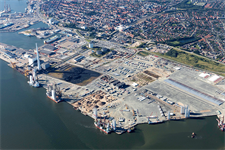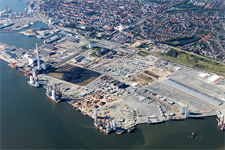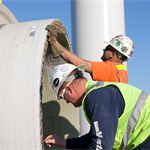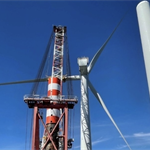Leaked document reveals plan for 300GW of EU offshore wind by 2050
Energy Disrupter

A leaked European Commission document has revealed a dramatic shift in the scale of the EU’s offshore wind ambitions.
WindEurope believes it will shape the development of European offshore wind for decades.
The offshore renewable energy strategy, expected to be officially launched on Thursday (19 November) foresees growth in EU offshore wind capacity to 300GW by 2050.
Much of the growth would occur between 2030 and 2050, requiring a framework for planning, investing in, building and operating the new capacity, says WindEurope.
Ivan Pineda, WindEurope’s director of public affairs said: “Offshore wind is cheap but requires huge upfront investment. So it’s crucial to minimise the finance costs. And the best way to do that is to ensure wind farms have a stable income. It’s very important the (offshore renewable energy) strategy recognises this.” International connections would be a “logical evolution,” he added.
Pineda added. “To achieve that we need an enabling framework to invest, operate and cooperate these so-called offshore hybrids. And we need it by 2021. There are projects in the pipeline waiting for this. The current EU rules put offshore hybrids at a disadvantage against regular offshore wind and interconnector projects.”
The strategy will be officially presented on Thursday.
WindEurope also sees the offshore wind sector aiding Europe’s economic recovery and associated jobs growth. In its recent report, it said that every offshore wind turbine generates €15 million of economic activity.
Pineda added: “The EU offshore energy strategy will enable more regions to develop offshore wind. For example, mainstreaming floating wind in Spain, Portugal or Greece. Or exploiting bottom fixed offshore wind in the Black Sea. Islands will stand to win too. And even landlocked countries will benefit from industrial development of components and some services.”
“Member states must invest heavily in existing port infrastructure. We estimate ports will need €6.5 billion to meet 2030 volumes of offshore wind. Ports will become renewable energy hubs to store, transport, manufacturing large wind turbine components and even building floating wind turbines. Investments in ports will significantly help to cut costs for offshore wind.”
“Countries shouldn’t forget that the electricity grids need to be expanded and optimised to transport renewable electricity from offshore to where it is needed. Europe hasn’t invested enough in power grids. We need to correct that if we want offshore wind to expand.”
















